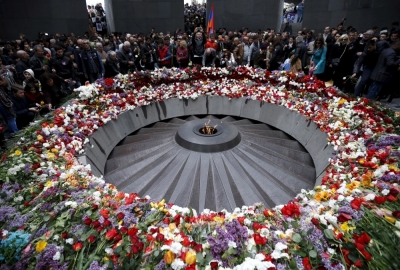5 Things You Should Know About the Armenian Christian Genocide
Coinciding With World War I

Armenia, a former Soviet republic, is a landlocked country in the Caucasus region of Eurasia. It was the first nation in the world to declare Christianity its official religion in the fourth century. In the 15th century, the Armenians, who were mostly Christian, were absorbed into the Ottoman Empire and were ruled by Muslims, a backgrounder from the History Channel explains.
Although conflict had been brewing for decades before the genocide, a pivotal moment occurred when a nationalist group known as the Young Turks, who wanted to "Turkify" the Ottoman Empire, rose to power in 1908 and Armenians were regarded as a threat.
As the Turks sided with and joined Germany in 1914 during World War I, the religious leaders in the Ottoman Empire declared jihad against all Christians except those who were allied with them.
Turkish hostility toward the Armenians only increased as Armenians organized battalions to assist the Russians in the fight against the Turks in the region.
After the April 24, 1915, slaughter of the intellectuals in Constantinople, now Istanbul, Armenians were expelled from their homes and were forced to march to their death through the Mesopotamian desert. Many were stripped naked, humiliated, and those who paused to rest were shot.
Meanwhile, the Young Turks also launched an organization that dispatched squadrons comprised of murderers and ex-convicts who carried out "the liquidation of the Christian elements," according to one officer. Christians were murdered in particularly brutal fashion: crucifixions, being burned alive, and were thrown off cliffs to their death. Following the surrender of the Ottomans in 1918 in World War I, the leaders of Young Turks fled to Germany, which promised not to prosecute them for waging a genocide.




























